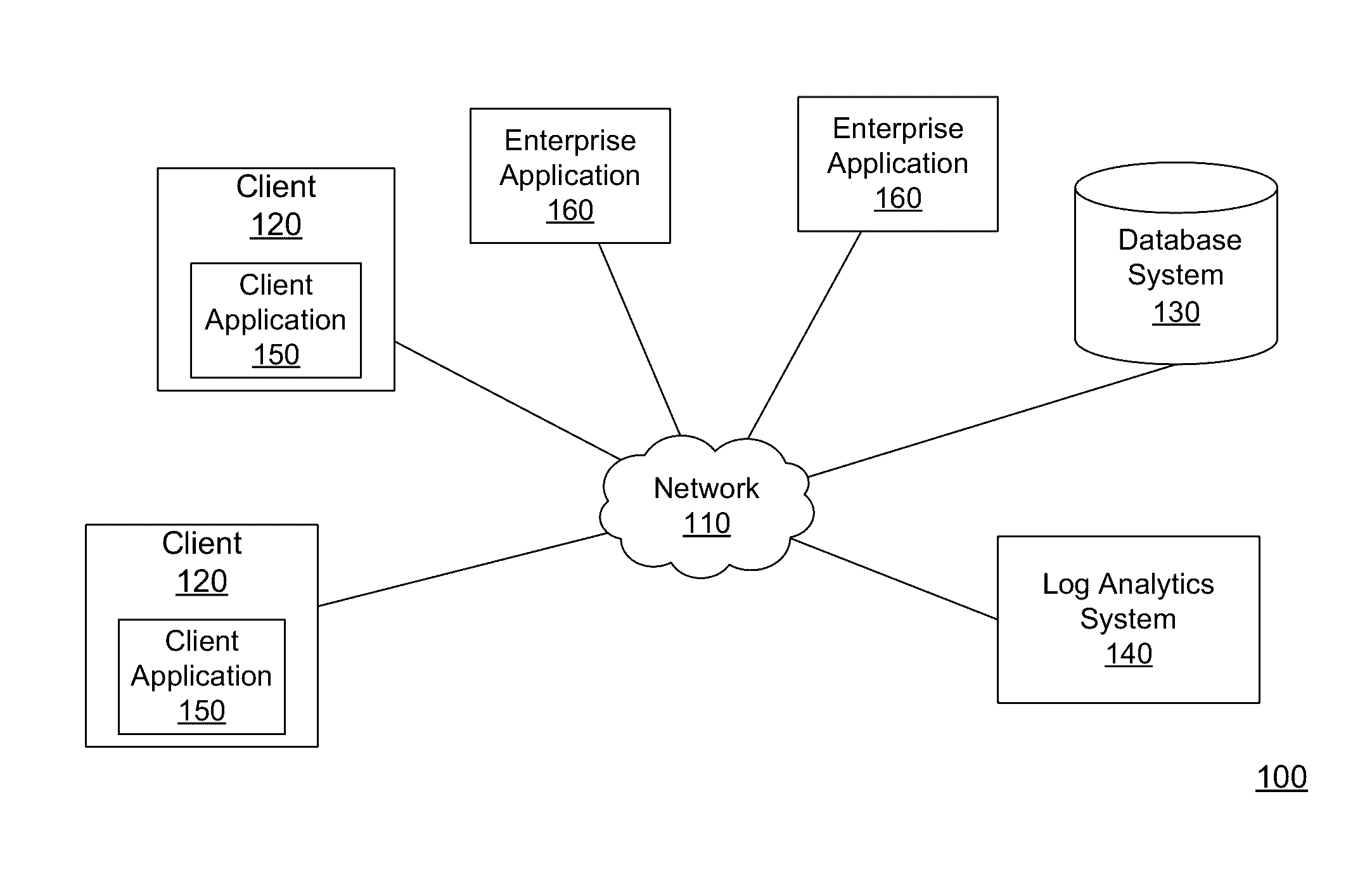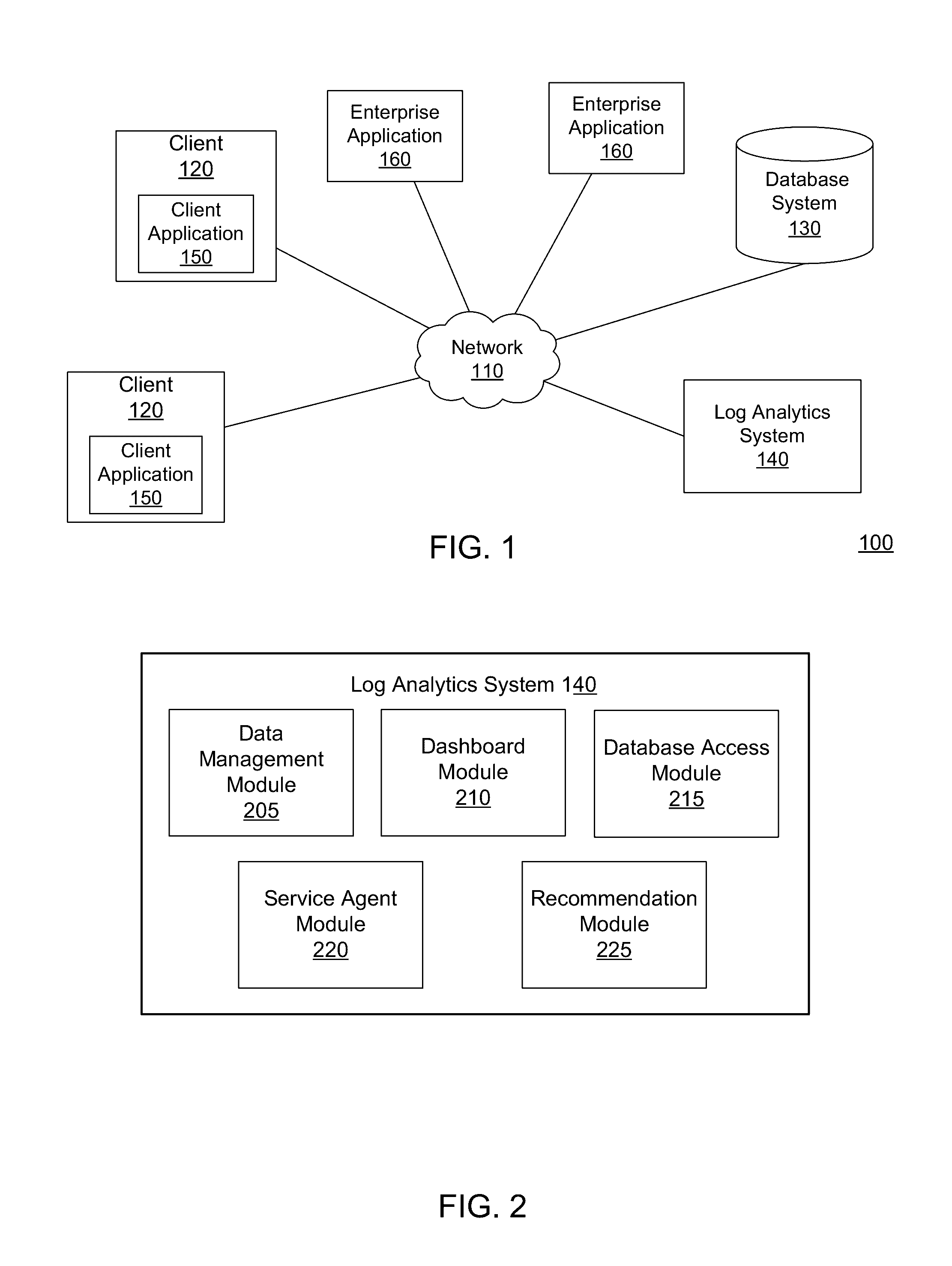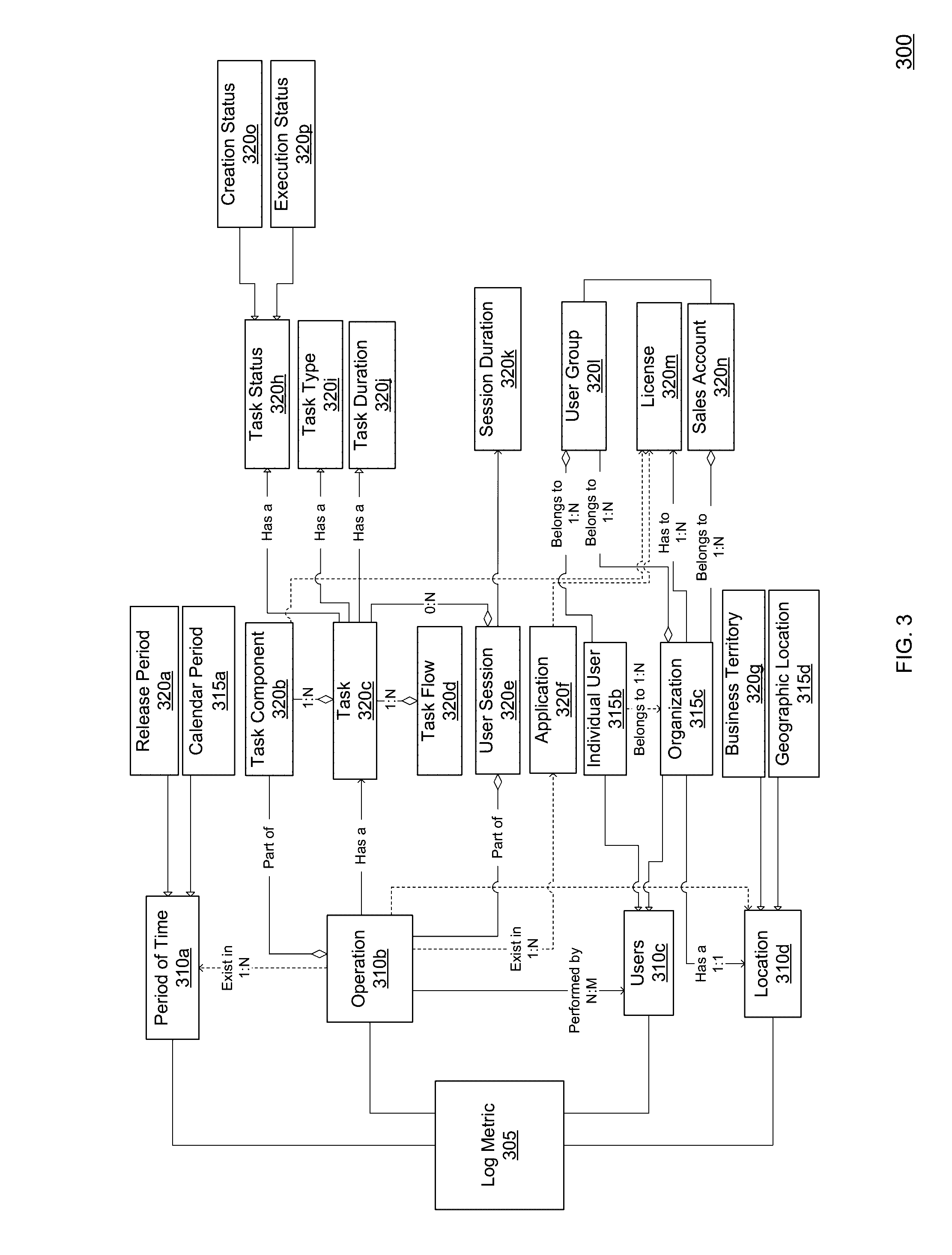Metric Recommendations in an Event Log Analytics Environment
a technology of event log analytics and metrics, applied in the field of data processing of log files, can solve the problems of limited current practices in log analytics and difficulty in obtaining a unified representation of overall system usage, and achieve the effect of flexible and extendable recommendation
- Summary
- Abstract
- Description
- Claims
- Application Information
AI Technical Summary
Benefits of technology
Problems solved by technology
Method used
Image
Examples
first embodiment
[0064]The log analytics system defines 605 classes in according to different embodiments. A first embodiment defines classes through self-categorization; users select a role, time period, location, or operation with the user interface as attributes for defining 605 a class for the recommendation module.
second embodiment
[0065]A second embodiment defines classes through account information by an organization at the time of registration. In this manner classes are defined in terms of vocabulary of the organization. A user is automatically assigned a class according to their account information, such as their organizational position (e.g., job title, department). A uniform taxonomy of job titles (e.g., director, supervisor, manager, engineer, analyst, etc.) that may be used across different organizations and companies allows for the generation of metrics that reflect underlying similarities in metric usage between different organizations.
third embodiment
[0066]A third embodiment implicitly defines classes by clustering log metrics using a clustering algorithm such as k-prototype clustering, independently of expressly defined user attributes. This approach generates the classes organically based on the similarity of the metrics themselves, and thus is useful to reveal hidden relationships and similarities between users in different roles, organizations or capacities that would not otherwise be discovered through explicitly defined classes.
[0067]The log analytics system generates 610 a corpus of vectors according to a vector space 700 model as shown in FIG. 7. The vector space 700 model is a data model that represents log metrics as algebraic vectors. The vector space representation generally allows textual documents to be compared for semantic similarity. In the specific implementation of the log analytics system, the log metrics serve as the documents.
[0068]More specifically, for each log metric stored in the database system, the re...
PUM
 Login to View More
Login to View More Abstract
Description
Claims
Application Information
 Login to View More
Login to View More - R&D
- Intellectual Property
- Life Sciences
- Materials
- Tech Scout
- Unparalleled Data Quality
- Higher Quality Content
- 60% Fewer Hallucinations
Browse by: Latest US Patents, China's latest patents, Technical Efficacy Thesaurus, Application Domain, Technology Topic, Popular Technical Reports.
© 2025 PatSnap. All rights reserved.Legal|Privacy policy|Modern Slavery Act Transparency Statement|Sitemap|About US| Contact US: help@patsnap.com



